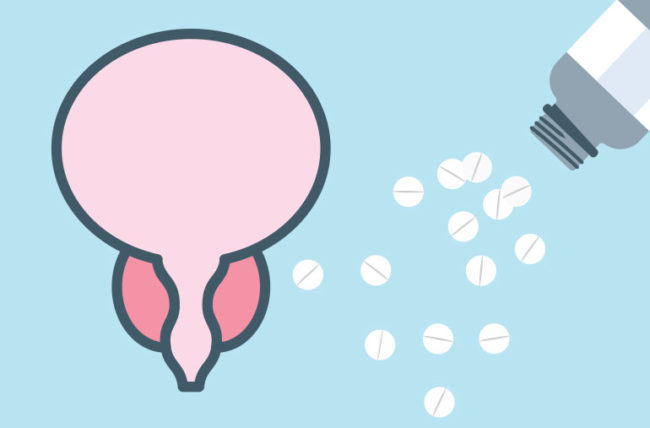You may start to think about labor and delivery when you reach the last weeks of your pregnancy. When will labor begin? When will labor begin? What is the best way to avoid tearing down my back?
Salena Zanni, MD , Ob/Gyn, says that vaginal tears are a common concern.
“I get the concerns of pregnant women who ask me about tears during delivery. “No one wants to tear and neither does your provider,” says Dr. Zanotti.
Some online forums and providers recommend that pregnant women perform a perineal massaging at home in order to reduce the number of stitches they will need after delivery.
Does it really work?
Dr. Zanotti states that the research on perineal massages during pregnancy is mixed. However, if you’re interested in trying it, there’s no harm.
Why do some people tear when they deliver?
What they say about birth being natural and magical is true. Also, it’s true that childbirth can be messy. It’s more common than one might think to see blood, poo on the table or tears in your genitals.
According to the perineum – a small patch of muscle and skin between your vaginal entrance and anus. It’s only 1.5 inches in length, but your perineum has a lot to do. It is a cradle that supports your Pelvic Floor, the muscles responsible for controlling your ability to poop and pee.
The skin on your vagina will stretch to make room for your baby as your body prepares to deliver. It doesn’t stretch far enough and eventually something has to give. Vaginal tears and perineal tears can be common. They are more likely to occur if you:
- You deliver a child that weighs more than 8 pounds.
- Your delivery progresses quickly.
- You will need to be assisted by your provider using forceps during delivery.
- The baby is born face-up.
- This is your first order.
The severity of tears in your perineum is graded. Some tears don’t require any treatment. Some will need stitches, which will dissolve over time. First-degree tears are small injuries in the first layer around the perineal area of the vagina. The fourth-degree tears is the most severe, and it extends through your rectum from your vagina.
Does perineal massaging work?
It’s perfectly normal to feel a little jittery at the thought of your delivery being ripped. Nobody wants to consider injuries to the most intimate parts of their body.
Can you prevent it from happening? It’s possible that your doctor, a friend or even a stranger posted on social media told you to massage or stretch your perineum in the last few weeks of your pregnancy to avoid tears.
And, sure, you can. Will it help? Dr. Zanotti believes that this is still up for discussion.
There are studies that support both sides. “There’s no consistent response to this question,” Dr. Zanotti points out.
If you examine some of the studies, you will find that you could reduce the risk of advanced tears if you massage your perineum regularly. Other studies show no difference.
Why are there inconsistencies between the two?
In order to do good science you must standardize the variables. If you’re studying a perineal massage at home, for example, it is important to take into account factors such as massage technique, intensity, duration, and frequency. This doesn’t include all the factors that are related to the delivery of the baby — its size, the speed at which it arrived, the interventions made by the healthcare provider, etc. It’s not easy to maintain the scientific integrity of such studies.
“It is difficult to determine who would have torn and who wouldn’t and then to determine whether perineal massaging made a different,” says Dr. Zanotti. It’s a complicated question.
It is up to you whether or not you decide to give perineal massaging a try. Even if you try your hardest, your delivery may not be completely tear-free. Dr. Zanotti says.
How to do perineal massage
Massage your perineum before and during childbirth to reduce the risk of it tearing. It may also lessen the severity.
Dr. Zanotti says that the perineum muscles can be tough and rigid if this is your first vaginal delivery. In theory, massaging this area could help stretch the muscles, and reduce the chances of tears.
She suggests that you speak to your doctor before attempting perineal massaging to ensure you fully understand the anatomy. Make sure that you are pressing in the correct places with the appropriate amount of pressure.
A perineal massage usually follows these steps:
- Wash your hands before you start to avoid bacteria entering your vagina. Your fingernails should be trimmed to prevent them from scratching the delicate tissue.
- As you lie on your back, make sure your spine is well supported. Spread your legs and bend your knees.
- Apply a lubricant like K-Y Jelly (r) or Astroglide (r) on your thumbs, fingers and perineum.
- Insert a single, lubricated finger (about 1 to 1,5 inches long) in your vagina. Gently insert the other thumb.
- Apply enough pressure so that you feel a slight stretch in your vagina. Hold this position for about a minute.
- Slowly move both thumbs in a U motion to feel a gentle stretching.
When to Try It
If you decide to massage your perineum, Dr. Zanotti recommends starting a few weeks prior to your expected due date. This is usually around the 36th or 37th week.
According to research, it is important to massage this area at least three or four times per week for five minutes each time.
What other methods are there to prevent tears during delivery?
Is there another way to avoid vaginal tears if perineal massaging during pregnancy doesn’t work?
There isn’t a lot you can do to reduce your risk of perineal lacerations during pregnancy, according to Dr. Zanotti. Think of it as one less thing to do during the last weeks before delivery!
She continues, “A controlled delivery is your best option for avoiding tears during vaginal delivery.” To that end, some providers will use methods during delivery to reduce the risk of tears.
According to research, perineal massaging by your provider duringdelivery can stretch your perineal tissues to reduce your risk of tears. Dr. Zanotti said that this is a common practice used by many providers during childbirth.
She adds that “other methods, such as applying a warm compression to the perineum while delivering the baby can also help loosen the tissue.”
ACOG also recommends that providers consider Episiotomy during delivery if necessary. For example, if the birth is proceeding quickly and a risk of a more serious tear is present. In some cases, episiotomies can help reduce the risk of a more severe natural tear.
It’s only natural that you worry about tears when you consider your birth experience. Anyone would not want to think about this possibility.
Know that your provider is likely to see perineal tears often. They can help you reduce your risk. If you have a tear they will know how to treat it.




















